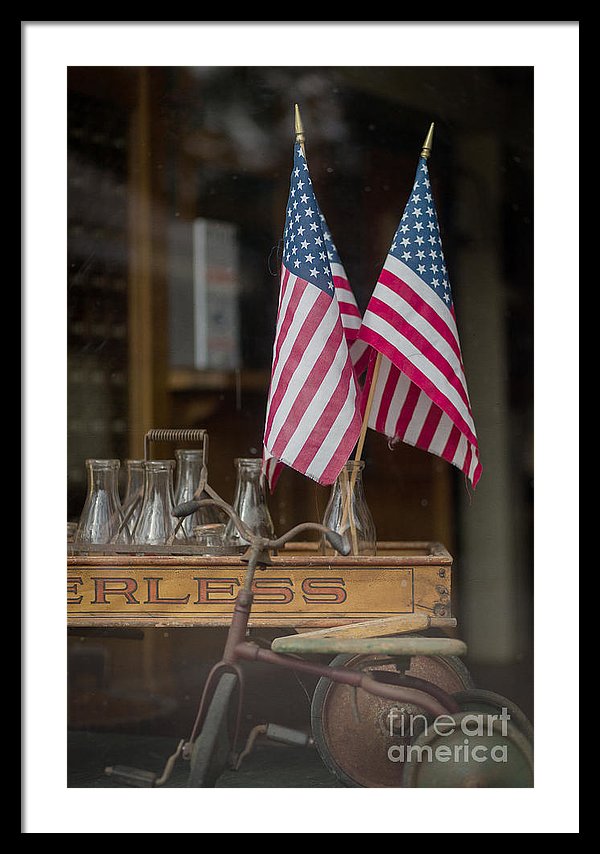Above: “Old General Store Window” by Edward M. Fielding. Please note: this site is funded through sales of my fine art prints.
I shoot mostly landscapes and scenic photographs. So mostly I have my camera set to “Aperture Priority Mode”, this is the mode where you set the aperture and the camera figures out the shutter speed, which hardly matters when the camera is on a tripod. I also usually have the ISO set at 100 for the best possible image quality (i.e. no noise).
For studio work with flash, I’ll have the camera on “manual”. The shutter speed has to be set to match the lights, usually 1/125 of the second and then I’ll play around with the output on the lights and the aperture on the camera to get the proper exposure after a series of test shots and using my light meter.
For sports and wildlife or when using a long lens handheld, I might be more worried about
The Canon EOS RP introduces an interesting new mode called “Fv” or Flexible-Priority AE that might just become my favorite mode of all. In “Fv” mode you can quickly change ISO, aperture, shutterspeed AND exposure compensation. Change one or two of them and the others will become auto. It’s a handy way to make adjustments.
Here is a breakdown of the various modes available on the creative mode dial, if you’ve had a digital camera before, most of these will be familiar.
Modes on the Canon EOS RP
A+
This is auto everything. Even the focus method and exposure. It’s suppose to be the “idiot” mode where all you have to due is pick up the camera and shoot. But often when you give total control over to the camera it can focus something you don’t want it to focus on. Good in a pinch but you should learn to uses one of the other modes that give you more control of YOUR image, not the camera’s idea of what the image should be.
| Program AE |
| The camera automatically sets the shutter speed and aperture to suit the subject’s brightness. This is called Program AE. * <P> stands for Program. * AE stands for Auto Exposure. |
With <P> mode, only the shutter speed and aperture are set automatically. You can freely set the AF method, metering mode, and other functions. So you have a little more control but not much. I never use this as aperture selection is so important to my overall vision of the shot.
| Shutter-Priority AE |
| <Tv> – In this mode, you set the shutter speed and the camera automatically sets the aperture to obtain the standard exposure matching the brightness of the subject. This is called shutter-priority AE. |
Tv stands for time value. This is a good mode for freezing action or making sure you are not getting motion blur with long lenses.
| Aperture-Priority AE |
| In this mode, you set the desired aperture and the camera sets the shutter speed automatically to obtain the standard exposure matching the subject brightness. This is called aperture-priority AE. A higher f/number (smaller aperture hole) will make more of the foreground and background fall within acceptable focus. On the other hand, a lower f/number (larger aperture hole) will make less of the foreground and background fall within acceptable focus. *<Av> stands for Aperture value (aperture opening). |
I use this for landscapes if I want sharp scenes, I’ll pick an aperture in the middle where the lens is most sharp – usually between f8 – f11. If I want blurred backgrounds on a portrait, I’ll shoot at a low number say f2 – f5.6.
| Manual Exposure |
| In this mode, you set both the shutter speed and aperture as desired. To determine the exposure, refer to the exposure level indicator or use a commercially available exposure meter. This method is called manual exposure. * <M> stands for Manual. |
I use this mode for
Except perhaps when shooting a series of shots like a portrait session or fashion session. In this
You will notice in manual exposure mode, the exposure compensation adjustment is not available. This is because you, not the camera are in charge of figuring out what is the correct exposure.
With the Canon EOS RP and other mirror-less cameras, this is not that hard since you can see what the shoot will be on your LCD screen before you even take the shot.
Think of it this way. Every other mode gives you some automatic assistance using the camera internal light metering. In manual
Although, if you hit the info button, you can see the histogram. The histogram is basically the read out from the light meter. You can use it to create the correct exposure.
Also note that on this screen the exposure compensation indicator is not selective but it will move to show if the scene is over or under exposed according to the camera’s meter. So you can use it as a guide just like the histogram provides a guide to the “correct” exposure.
Give it a try, there is no
Long (Bulb) Exposures
| In this mode, the shutter stays open as long as you hold down the shutter button completely, and closes when you let go of the shutter button. This photographic technique is called “bulb exposure”. Use bulb exposures for night scenes, fireworks, the heavens, and other subjects requiring long exposures. |
Free Photography Guides
Note: I have written three free guides talking about each of these in-depth with illustrations: Guide to Understanding ISO, Guide to Understanding Shutter Speed and Guide to Understanding Aperture.
